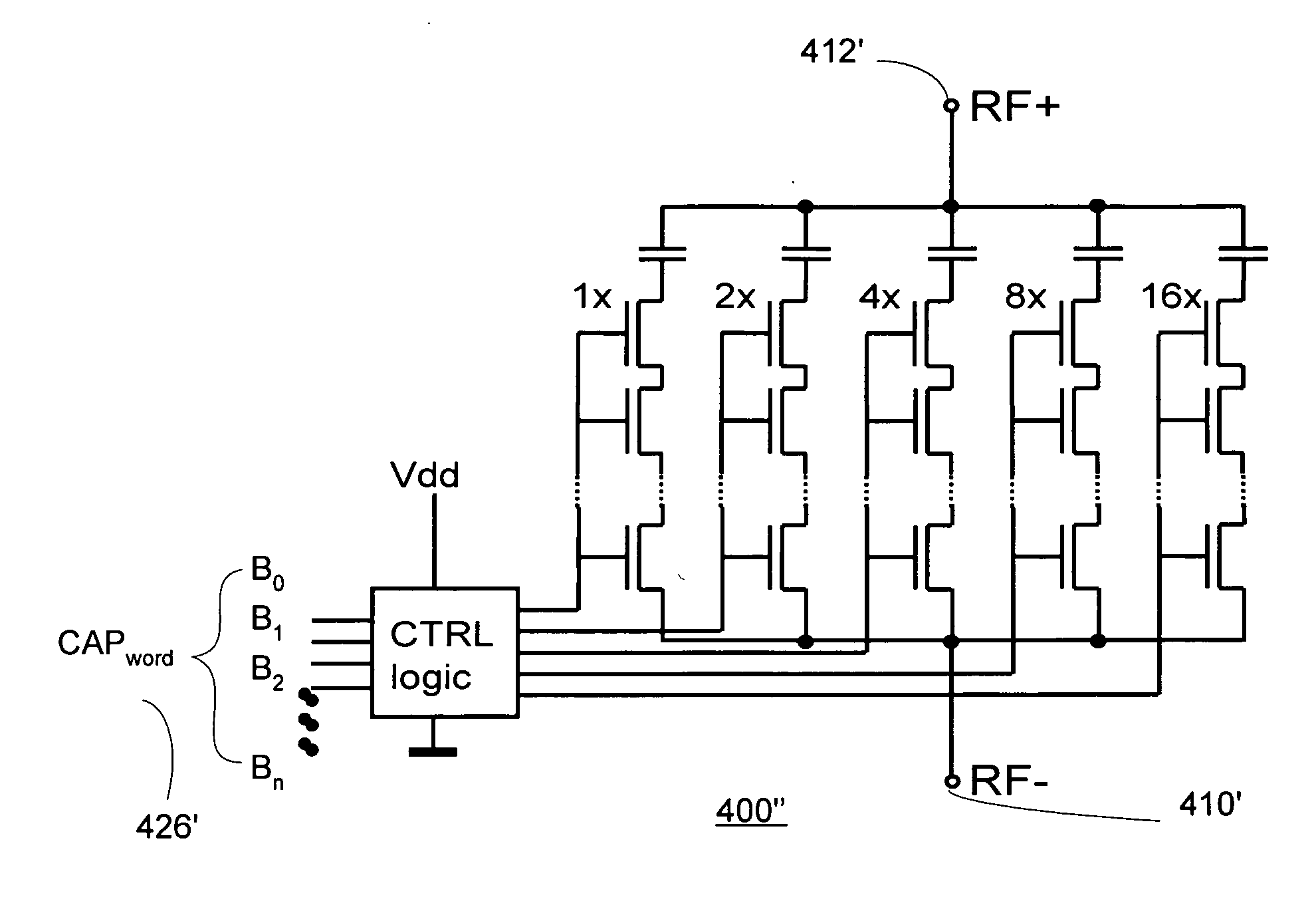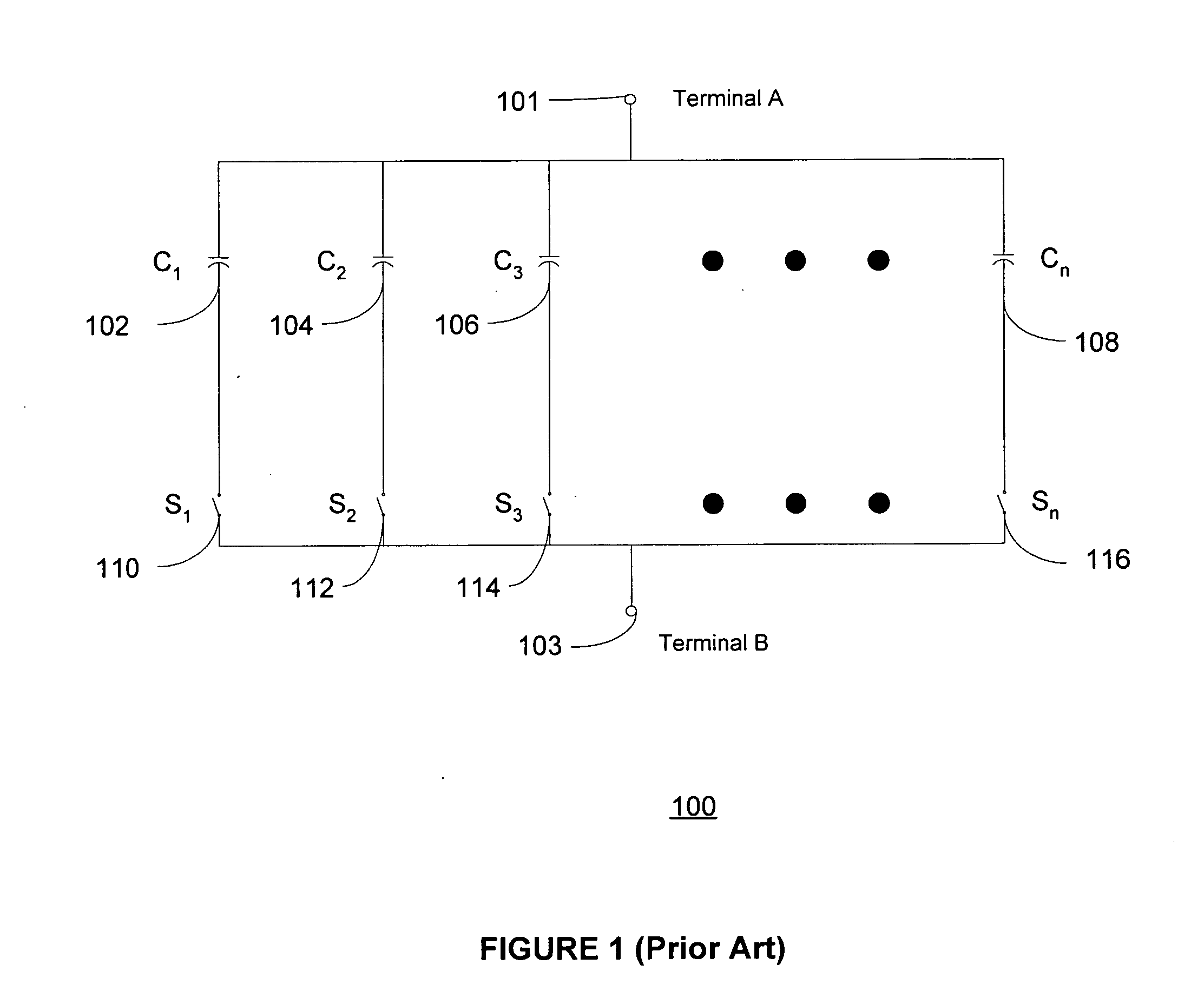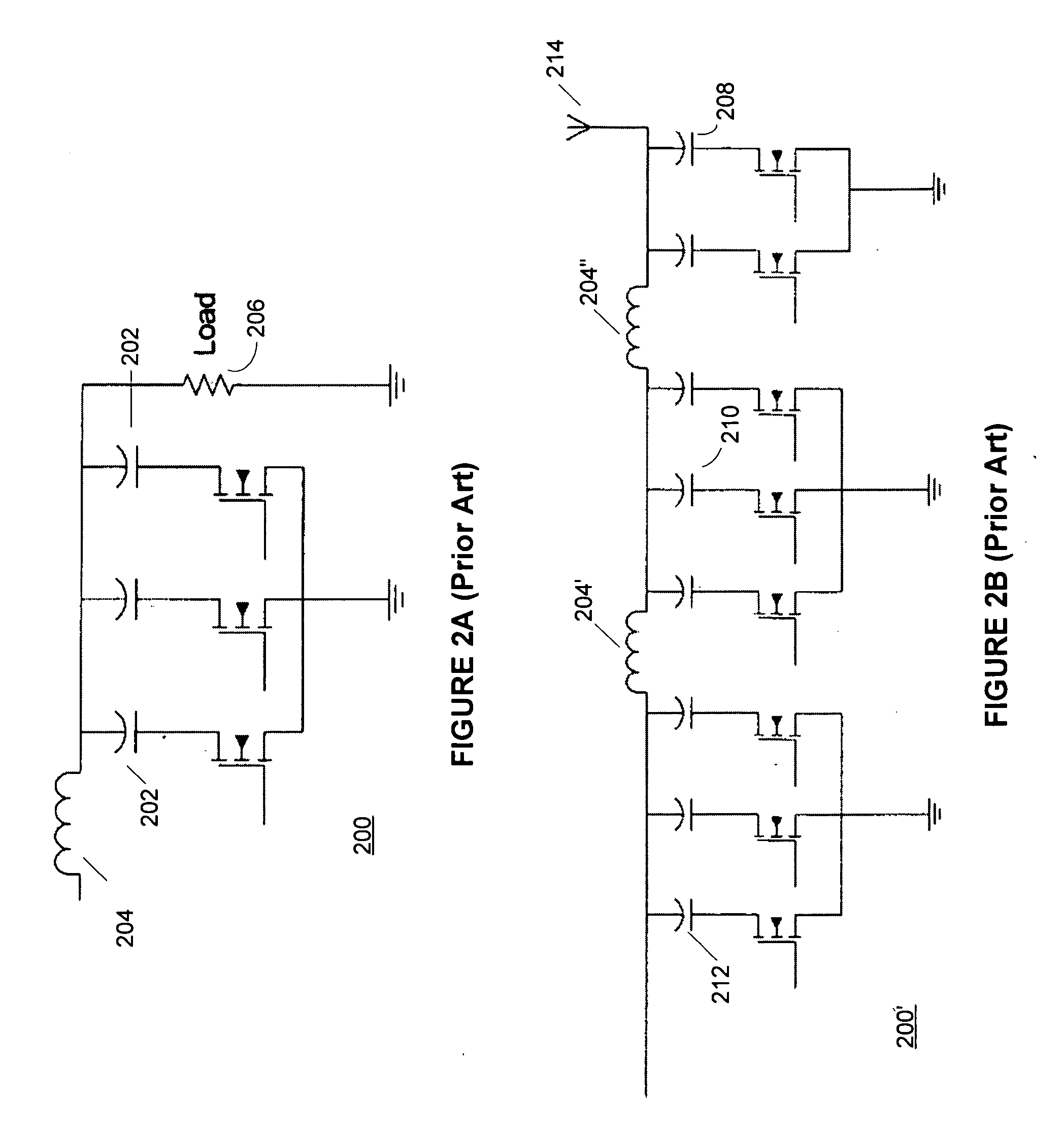One well-known problem to those skilled in the art of the design and manufacture of integrated circuits is the poor tolerance values associated with integrated circuit components, especially the tolerance values of passive circuit components.
Consequently, it has proven difficult and costly in the past to implement tuned networks or circuits using on-
chip passive electrical components.
Disadvantageously, the prior art post-fabrication techniques produce only static solutions.
Although the trimmed devices may perform adequately under nominal conditions, they may not perform adequately under all of the operating conditions of the integrated circuit.
The
improved method and apparatus should monitor and correct the performance characteristics of tuned networks especially as these performance characteristics are adversely affected by poor tolerances of on-
chip passive
electrical devices, and by the variable operating conditions of the device.
Disadvantageously, this prior art approach is undesirable when the tuned circuit operates at relatively high frequencies.
For example, when the tuned circuit operates in the GHz range of operating frequencies, the
bank of switches (e.g., 110, 112, 114, and 116) introduce significant loss into the tuned circuit and thereby degrade the circuit's performance characteristics.
The prior art solution shown in FIG. 1 also disadvantageously increases both the amount of space (i.e., integrated circuit real estate) and the amount of power required to accommodate and operate the switches.
Only a few short years ago, the integration of digital
baseband,
intermediate frequency (IF), and
radio frequency (RF) circuitry on a single
System-on-
Chip (SoC) integrated circuit seemed improbable or nearly impossible owing to a number of factors such as incompatible process technologies, yield limitations, high testing costs, poor matching of passive components, and lack of on-
chip passive components having adequate analog characteristics.
Complexity will continue to rise due to the increased popularity of
peripheral radios and functions that also need access to the antenna.
The increased complexity in mobile telephone
handset design has greatly complicated the RF front-end by more than tripling the number of high-power
signal paths.
While these advancements in
RF switch design facilitate further integration of mobile
handset circuitry, a significant problem is presented as a result of mismatched impedances present at the mobile
handset antenna terminal.
Due to the variable operational environment of the mobile handset causing the impedance at the antenna terminal to vary over a wide range,
antenna impedance mismatch poses significant technical challenges for the mobile handset
design engineer.
As described therein, mobile handsets are used in a variety of configurations and positions, by users who manipulate the handset and, in particular, the antenna, in ways that are difficult to predict.
Consequently, it is a major design
engineering challenge to maintain proper operation of the mobile handset over a wide range of antenna impedances.
In the worst case, the high
standing wave amplitude or possible oscillation caused by the mismatch in the circuit may damage the power
amplifier.
Unfortunately, this solution is disadvantageous because it creates attenuation, and therefore decreases
antenna efficiency.
This has proven difficult to achieve in prior art mobile handsets.
Disadvantageously, the tunable networks described in the Sjöblom paper do not, and cannot be designed to provide sufficient power required by some
wireless telecommunication applications.
Anything built on a bulk
CMOS process cannot meet the
higher power handling requirements.
Stacked transistors cannot be implemented using a bulk
CMOS process due to problems associated with
substrate coupling.
While the
switched capacitor approach taught by Qiao, et al., has promising aspects, an integrated circuit implementation using this approach would occupy significant integrated circuit real estate.
In addition to the unwieldy die area required by the Qiao teachings, it is also difficult to accurately control the overall
capacitance due to the tolerance differences in the discrete capacitors.
The circuit also disadvantageously has inferior
power handling capabilities,
linearity and Q-factor values for some applications.
In addition, in this prior art solution, degradation in performance is caused by parasitic
inductance of discrete capacitors.
Disadvantageously, these approaches have disadvantages of cost, tuning range (also referred to as “tuning ratio”) (which generally corresponds with maximum available capacitance / minimum available capacitance), integration and
linearity.
For various reasons, these solutions fail to meet the
power handling, tuning ratio, and linearity requirements imposed by many
wireless telecommunication specifications.
Even after years of research and development, several MEMS and BST
manufacturing enterprises that were founded to pursue the tunable component opportunities have fallen short of the requirements and specifications set forth in various
cellular telephone specifications.
BST capacitors exhibit significant problems when operated at high temperatures where their Q-factor is significantly degraded.
For example, varactor diodes and bulk
CMOS switched capacitors do not meet the power and linearity requirements of these cellular specifications.
MEMS
switched capacitor banks exist, but they do not seem to meet power and linearity requirements, they require separate high-
voltage driver chip and
hermetic packaging, and reliability is a problem in mobile handset applications.
These prior art solutions have difficulty meeting power and linearity requirements.
They also disadvantageously require an external
high voltage (HV) integrated circuit in order to produce high bias voltages (e.g., 20-40V) and generally cannot be integrated with other
control electronics.
The BST
voltage tunable capacitors also suffer from degraded performances due to
hysteresis and temperature stability.
 Login to View More
Login to View More  Login to View More
Login to View More 


